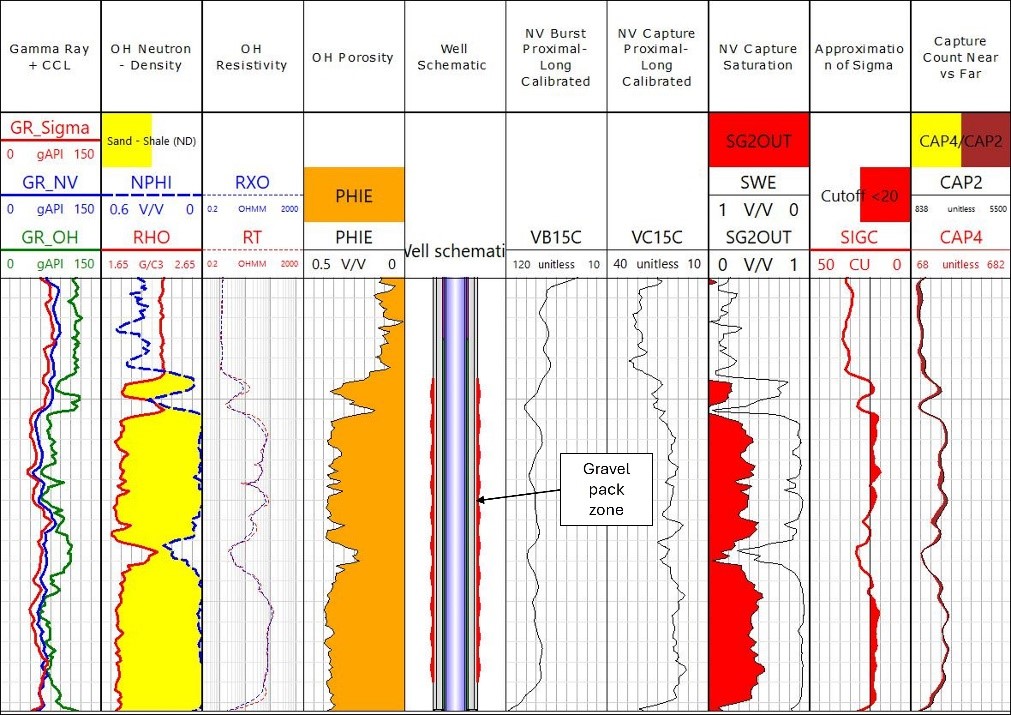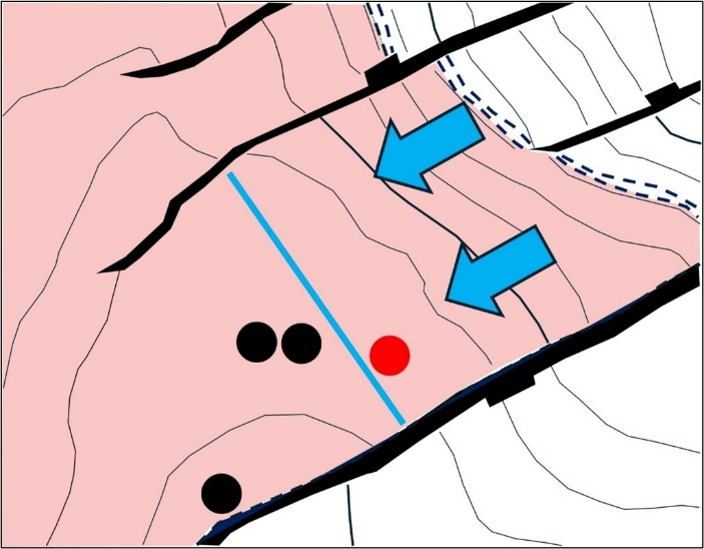Objectives
- Quantify gas-liquid saturation in a cased-hole well based on theN-Vision mode.
- Correlate the gas saturation in a gravel pack zone with the depth structural map.
Our Approach
- Following a thorough pre-job analysis, the Interpretation and Evaluation Services (IES) team conducted a cased-hole reservoir evaluation using the Raptor 2.0 system. The data would be acquired in N-Vision mode to determine gas-liquid saturation in the targeted reservoirs, associated with existing openhole data.
- A Monte-Carlo N-Particle (MCNP) model was analyzed and obtained for data processing and interpretation, referring to the operator’s given parameter input (e.g., bit size, borehole fluid density, casing size).
- To ensure the best data quality for the operator, the N-Vision data was checked for data repeatability for each pass and made sure the curves to be on depth with openhole data before the field engineer demobilized the Raptor 2.0 tool.
- The zonation of the well was divided based on fluid behind the tubing, fluid behind the casing, and well completion configuration. Fluid behind tubing was determined from a pressure gradient analysis, while the fluid behind casing was identified by observing changes in the N-Vision detector ratio curves especially VB15C and VC15C where both burst and capture raw curves were very sensitive to the fluids. The completion changes were identified using the well schematic.
- Based on the interpretation, the gas saturation of the targeted zones was determined by analyzing the capture ratio curve and compared with the effective water saturation from openhole data. A correction for shale and porosity was made to get the best quantitative saturation result.
Value to Customer
- The interpretation provided by the IES team helped the operator quantify gas-liquid saturation based on the N-Vision mode and correlate the gas saturation with the depth structural map before shutting in to perform logging.
- Based on the saturation analysis, the gas saturation from the top to bottom lobe in the gravel pack zone is significantly lower compared to the effective water saturation. Since the well is closer to the edge of the water, which is identified from depth structural map, there is possibility of strong effect of water drive influx which cause significant gas reduction across all sands. Thus, this well will no longer produce gas, and the operator can save the operational cost of logging.
Details
Location
Asia
Well Type
Exploration
Hole Size and Angle
8 1/2 in., 36.7°
Products/Services


×
![]()
Gas saturation from capture ratio curve in the gravel pack zone is significantly lower compared to effective water saturation from open hole from top to bottom lobe, suggesting water influx effect and not just normal depletion with gas expansion only.
×
![]()
Depth structural map of the gravel pack zone showing the studied well (red dot) is closer to the edge water (blue solid line) compared to the other wells (black dots), and the water drive influx direction is towards the edge water which possibly causing more water drive effect and reducing gas saturation in the well.